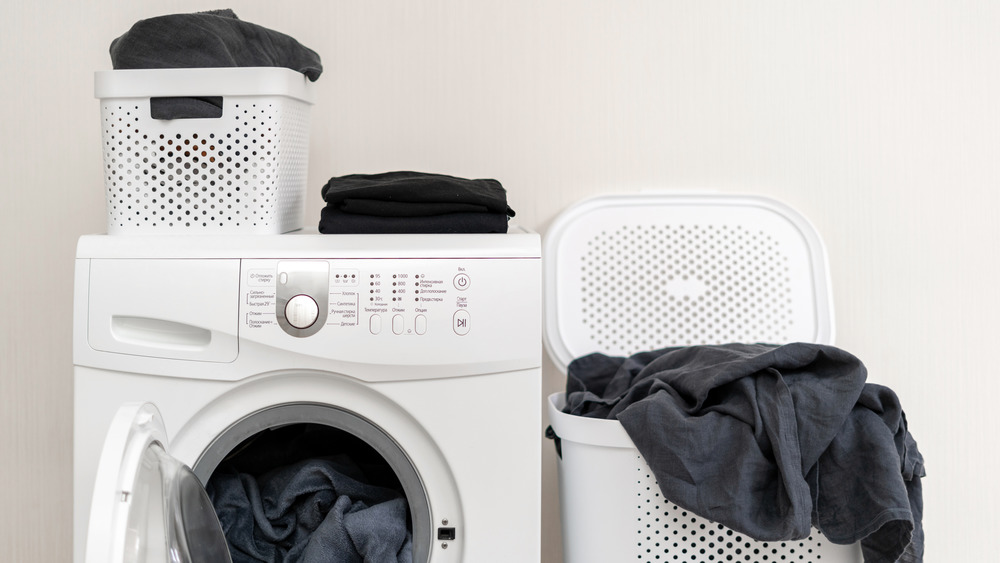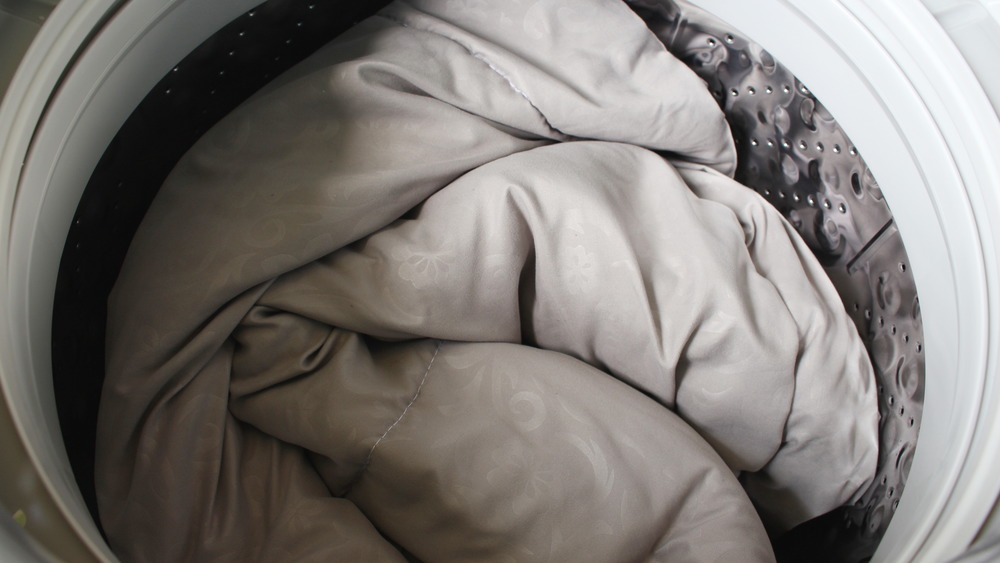How To Wash Your Weighted Blanket
Getting yourself a weighted blanket is the ultimate act of self-care. These magical blankets have helped insomniacs get more ZZZs. And with the help of a 30-pound blanket tucking them in at night, people have reported feeling less anxiety and more calmness, according to a 2015 Swedish study reported in WebMD. If you're a bit of neat freak, though, that calmness may quickly dissipate when you realize that at some point, you need to wash this cumbersome bedding, which weighs more than your average terrier, and eventually will start to smell like one, too, without a good soak in some suds. You're sweating just lifting the blanket to carry it to the laundry room — surely, your weighted blanket is a little too much for your washer and dryer to handle?
This actually depends on how heavy the blanket is, and what type of material is responsible for the weight. "Blankets over 20 pounds should be taken to a laundromat and washed in a commercial-size machine simply to spare your home machine from wear and tear," Elizabeth Grojean, founder of weighted blankets by Baloo Living, told Real Simple. If the blanket is under 20 pounds, it can be washed on the gentle cycle in cold water, unless the care tag says otherwise, Grojean noted.
Some weighted blankets can only be hand-washed
While the outer fabric of your weighted blanket likely is made from cotton or a synthetic fabric similar to the other bedding in your home, fillers used to give the blanket its weight vary, and some of them are more conducive to a toss in a washing machine than others, according to The Spruce. Micro-glass beads are fine in a cold or warm-water cycle, and can be dried on low, but if your blanket is weighed down by plastic pellets, you need to stick to the cold cycle, only, and let it air dry. Weighted blankets made with steel shot beads and smooth pebbles can only be hand-washed and air-dried. To hand-wash a weighted blanket, wrangle in into a bathtub filled with cold water and a half cup of detergent, suggests LoveToKnow.
Meanwhile, if your blanket is filled with an organic material such as rice, corn, beans, or sand, you can only spot clean it; don't even think of giving the whole blanket a soak, The Spruce points out. (Wet beans: need we say more?) For these blankets, it's best to use a washable cover, so that the part that comes in contact with your skin can be tossed in the wash with your sheets and pillowcases on a regular basis.

